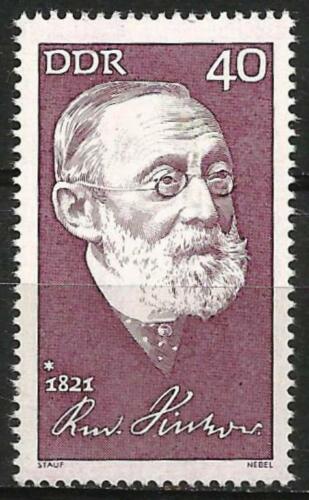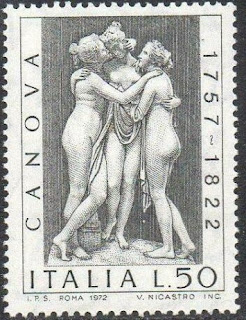Here are some events that happened on October 13th. It could be an event or a person that died or was born on that day
1821 Born: Rudolf Virchow, German physician, biologist, and politician (d. 1902)
Rudolf Virchow (13 October 1821 – 5 September 1902) was a German physician, anthropologist, pathologist, prehistorian, biologist, writer, editor, and politician. He is known as "the father of modern pathology" and as the founder of social medicine, and to his colleagues, the "Pope of medicine". He received the Copley Medal in 1892. He was a foreign member of the Royal Swedish Academy of Sciences and was elected to the Prussian Academy of Sciences, but he declined to be ennobled as "von Virchow".
Virchow studied medicine at the Friedrich Wilhelm University under Johannes Peter Müller. He worked at the Charité hospital under Robert Froriep, whom he succeeded as the prosector. His investigation of the 1847–1848 typhus epidemic in Upper Silesia laid the foundation for public health in Germany, and paved his political and social careers. From it, he coined a well known aphorism: "Medicine is a social science, and politics is nothing else but medicine on a large scale". He participated in the Revolution of 1848, which led to his expulsion from Charité the next year. He then published a newspaper Die Medizinische Reform (The Medical Reform). He took the first Chair of Pathological Anatomy at the University of Würzburg in 1849. After five years, Charité reinstated him to its new Institute for Pathology. He co-founded the political party Deutsche Fortschrittspartei, and was elected to the Prussian House of Representatives and won a seat in the Reichstag. His opposition to Otto von Bismarck's financial policy resulted in an anecdotal "Sausage Duel", although he supported Bismarck in his anti-Catholic campaigns, which he named Kulturkampf ("culture struggle").
A prolific writer, he produced more than 2000 scientific writings. Cellular Pathology (1858), regarded as the root of modern pathology, introduced the third dictum in cell theory: Omnis cellula e cellula ("All cells come from cells"). He was a co-founder of Physikalisch-Medizinische Gesellschaft in 1849 and Deutsche Gesellschaft für Pathologie in 1897. He founded journals such as Archiv für Pathologische Anatomie und Physiologie und für Klinische Medicin (with Benno Reinhardt in 1847, from 1903 under the title Virchows Archiv), and Zeitschrift für Ethnologie (Journal of Ethnology). The latter is published by German Anthropological Association and the Berlin Society for Anthropology, Ethnology and Prehistory, the societies which he also founded.
Virchow was the first to describe and christen diseases such as leukemia, chordoma, ochronosis, embolism, and thrombosis. He coined biological terms such as "chromatin", "neuroglia", "agenesis", "parenchyma", "osteoid", "amyloid degeneration", and "spina bifida"; terms such as Virchow's node, Virchow–Robin spaces, Virchow–Seckel syndrome, and Virchow's triad are named after him. His description of the life cycle of a roundworm Trichinella spiralis influenced the practice of meat inspection. He developed the first systematic method of autopsy, and introduced hair analysis in forensic investigation. Virchow was critical of Ignaz Semmelweis and his idea of disinfecting, who said of him, "Explorers of nature recognize no bugbears other than individuals who speculate". He was critical of what he described as "Nordic mysticism" regarding the Aryan race. As an anti-evolutionist, he called Charles Darwin an "ignoramus" and his own student Ernst Haeckel a "fool". He described the original specimen of Neanderthal man as nothing but that of a deformed human.
Stamps from East Germany and Berlin depicting Rudolf Virchow
1822 Died: Antonio Canova, Italian sculptor (b. 1757)
Antonio Canova (1 November 1757 – 13 October 1822) was an Italian Neoclassical sculptor, famous for his marble sculptures. Often regarded as the greatest of the Neoclassical artists, his sculpture was inspired by the Baroque and the classical revival, and has been characterised as having avoided the melodramatics of the former, and the cold artificiality of the latter.
Canova's sculptures fall into three categories: Heroic compositions, compositions of grace, and sepulchral monuments. In each of these, Canova's underlying artistic motivations were to challenge, if not compete, with classical statues.
Canova refused to take in pupils and students, but would hire workers to carve the initial figure from the marble. He had an elaborate system of comparative pointing so that the workers were able to reproduce the plaster form in the selected block of marble. These workers would leave a thin veil over the entire statue so Canova's could focus on the surface of the statue.
While he worked, he had people read to him select literary and historical texts.
Stamps and cover from Italy and Vatican City depicting Canova's works
2016 Died: Bhumibol Adulyadej (Rama IX), King of Thailand (b. 1927)
Bhumibol Adulyadej (5 December 1927 – 13 October 2016), conferred with the title King Bhumibol the Great in 1987 (officially conferred by King Vajiralongkorn in 2019), was the ninth monarch of Thailand from the Chakri dynasty, titled Rama IX. Reigning since 9 June 1946, he was the world's longest-reigning current head of state from the death of Emperor Hirohito of Japan in 1989 until his own death in 2016,, and is both the second-longest reigning monarch of all time and the longest-reigning monarch to have reigned only as an adult, reigning for 70 years and 126 days. During his reign, he was served by a total of 30 prime ministers beginning with Pridi Banomyong and ending with Prayut Chan-o-cha.
Forbes estimated Bhumibol's fortune – including property and investments managed by the Crown Property Bureau, a body that is neither private nor government-owned (assets managed by the Bureau were owned by the crown as an institution, not by the monarch as an individual) to be US$30 billion in 2010, and he headed the magazine's list of the "world's richest royals" from 2008 to 2013 although the same magazine also estimated the worth of the British monarchy triple that of the Thai. In May 2014, Bhumibol's wealth was again listed as US$30 billion.
After a period of deteriorating health which left him hospitalized on several occasions, Bhumibol died on 13 October 2016 in Siriraj Hospital. He was generally highly revered by the people in Thailand – some saw him as close to divine. Notable political activists and Thai citizens who criticized the king or the institution of monarchy were often forced into exile or to suffer frequent imprisonments. Yet many cases were dropped before being proceeded or were eventually given royal pardon. His cremation was held on 26 October 2017 at the royal crematorium at Sanam Luang. His son, Maha Vajiralongkorn, succeeded him as King.
Stamps from Siam and Thailand depicting Rama IX










No comments:
Post a Comment